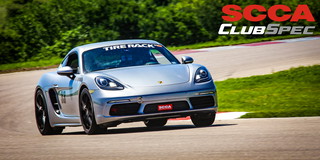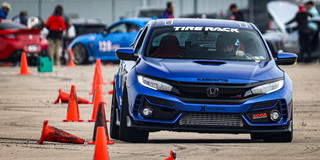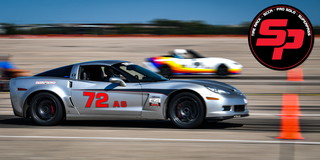
The cobra is a quick, silent snake that strikes fear in the heart of its prey. Much the same can be said of the lookalike Cobra built from scratch in Vancouver, BC, by Doug Yip of SCCA’s Northwest Region. The one-of-a-kind creation is fast, quiet, and ready to attack as a result of being an electric vehicle (EV).
The car has seen action in Regional SCCA® Road Racing, classed as a GT-Overmodified (GT-O) vehicle, as well as HillClimbs where it competes in the Unlimited 1 (U1) field. And if you need proof the vessel is speedy, it recently became the fastest Production-bodied car to ever complete the 2.2-mile Knox Mountain Hill Climb in Canada.
Building a Beast
Perhaps akin to Alessandro Volta’s work more than 200 years ago, Yip is a bit of a pioneer when it comes to electric-powered race cars. This particular project began in 2015 with Yip, a retired mechanical engineer, deploying Solidworks software to design the chassis.
The tubing was CNC cut, then bent fabrication and assembly was done by Kramer Racing, who also supplied the 427 Cobra body mold. Calmar Fiberglass laid the lightweight body, which was modified with flip front and rear sections for easy vehicle maintenance. The suspension utilizes C5 Corvette spindles and hubs, and geometry was computer designed to obtain the exact characteristics desired.
“I actually got together with some of my buddies from engineering school,” Yip said of the brain trust behind this project. “When I told them what I was doing, they all asked how they could get involved. So as far as doing work on the car, we got a whole team.”
The vehicle has gone through multiple modifications, the story of which has been logged at the E Power Racing YouTube page. This Cobra is currently an all-wheel-drive machine propelled by two Tesla Model 3 motors – one for the front wheels and the other for the rears. Each unit can supply upwards of 240 kilowatts of power (roughly 320 hp), and a reconfigured Tesla Model 3 battery pack provides the juice.
“We control the front and rear motors independently,” Yip said. “I ratioed the front motor to give it a little less power and torque than the rear so we don’t get terminal understeer on the car.”
Heat has been a big challenge throughout the project. Most EV motors are “intelligent” and draw back on power as internal temperatures increase. That helps defend against damage, but also greatly hampers performance during a 20-minute sprint race.
“We experimented with all sorts of cooling systems … to keep the motor temperatures down,” Yip said about the struggle. “We decided the only way we could actually keep running through the end of a race was to split the power between two motors. We are now keeping each motor pretty cool by running less power through it.”
“The whole project has been like a big science experiment. We’re always playing, always tinkering,” Yip added. “This was a brand-new learning experience and a lot of fun. When we started, there was actually nobody doing this kind of stuff.”
SCCA Powering Forward
Yip’s creation was constructed to meet regulations set forth by Canada’s Confederation of Autosport Car Clubs. It has since been upgraded to be fully compliant with SCCA’s Supplemental Common Rules for Electrified Vehicles (SCREV).
SCCA’s Electrified Vehicle Advisory Committee (EVAC), of which Yip is a member, is charged with creating unified procedures for EV usage across multiple SCCA disciplines. Be it SCCA Road Racing, Time Trials, Solo®, RallyCross, or HillClimb, the Committee has been hard at work and recently released the 23-page SCREV document.
The SCREV outlines a common safety and training baseline for all EVs across various SCCA programs. It acts as an additional set of rules laying out the required elements that ensure the safety of all drivers, volunteers, and workers when EVs are involved at events.
To dig deeper into the topic, check out the SCREV guidelines. For even more information, head to the EVAC’s webpage on SCCA.com.
Photo Kyle Thomson










